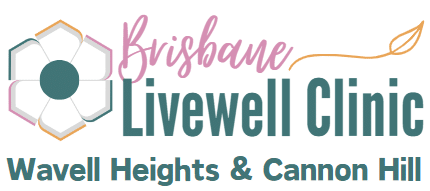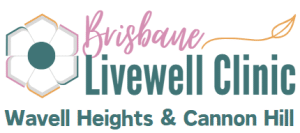Understanding Bowen Therapy
Bowen therapy, also known as Bowenwork or Bowtech, is a holistic remedial body technique that aims to provide pain relief and promote overall well-being. This gentle and non-invasive therapy involves precise and gentle rolling hand movements that target muscles, tendons, ligaments, fascia, and skin. The therapy was developed by Thomas Ambrose Bowen in Australia between 1916 and 1982.
Introduction to Bowen Therapy
Bowen therapy is based on the principle that the body has the innate ability to heal itself. The therapy works by stimulating the nervous system and activating the body's own healing responses. It primarily focuses on the fascia, a connective tissue that surrounds and supports muscles, tendons, and ligaments. By gently stretching the fascia, Bowen therapy aims to promote pain relief and restore balance in the body.
During a Bowen therapy session, a practitioner uses their fingers and thumbs to perform rolling movements over specific areas of the body. These movements are designed to stimulate mechanoreceptors in the fascia, which send signals to the brain, promoting relaxation and pain relief. The therapy is gentle, relaxing, and does not involve forceful manipulation, making it suitable for individuals of all ages, from newborns to the elderly.
Origins of Bowen Therapy
Bowen therapy was developed by Thomas Ambrose Bowen, an Australian practitioner, between 1916 and 1982. Bowen had a unique understanding of the body and its ability to heal. He developed a series of precise hand movements that were effective in providing pain relief and promoting overall well-being. After his death, his work was carried on by dedicated practitioners who continued to refine and expand on his techniques.
Today, Bowen therapy is practiced worldwide and has gained recognition for its effectiveness in addressing a wide range of musculoskeletal and neurological conditions. The therapy's gentle approach and focus on the fascia have made it a popular choice for individuals seeking natural and holistic solutions for their health concerns.
Understanding the principles and origins of Bowen therapy can help you make an informed decision about whether this therapy is right for you. In the following sections, we will explore the mechanisms of Bowen therapy, its effectiveness and limitations, as well as its applications for various conditions.
Mechanism of Bowen Therapy
Bowen therapy, also known as Bowenwork or Bowtech, is a holistic remedial body technique that focuses on the mechanoreceptors and soft connective tissue, known as fascia, in the body. Created by Thomas Ambrose Bowen in Australia, this therapy aims to promote pain relief by gently stretching the fascia using precise and gentle hand movements that target muscles, tendons, ligaments, fascia, and skin (Healthline).
Fascia and Pain Relief
The fascia plays a crucial role in Bowen therapy and pain relief. Fascia is a network of connective tissue that surrounds and influences every organ, muscle, and tissue in the body. By targeting the fascia, Bowen therapy aims to stimulate the nervous system and promote pain relief. The gentle moves performed during a Bowen therapy session maximize the influence on the nervous system receptors with minimal inputs, thereby reducing pain and discomfort (Better Health Victoria).
Autonomic Nervous System Response
Bowen therapy also acts on the autonomic nervous system, which consists of the sympathetic nervous system (responsible for the fight-or-flight response) and the parasympathetic nervous system (responsible for the rest-and-digest response). Therapists practicing Bowenwork assert that this therapy inhibits the sympathetic nervous system and activates the parasympathetic nervous system (Healthline). By promoting a shift from the fight-or-flight response to the rest-and-digest response, Bowen therapy helps induce deep relaxation and a state of calmness.
The autonomic nervous system response triggered by Bowen therapy can have a profound effect on the body. It may positively impact various physiological processes, such as reducing heart rate, blood pressure, and stress levels. By promoting relaxation and reducing stress, Bowen therapy may contribute to overall well-being and aid in the management of various conditions.
Understanding the mechanism behind Bowen therapy is essential in comprehending its potential benefits for pain relief and holistic healing. The gentle manipulation of fascia and the modulation of the autonomic nervous system response are key components that make Bowen therapy a unique approach to managing pain and promoting relaxation. To learn more about the applications of Bowen therapy and the conditions it can help address, continue reading the next section on Applications of Bowen Therapy.
Effectiveness and Limitations
When considering Bowen therapy as a potential treatment for pain relief and other conditions, it's important to evaluate its effectiveness and limitations. While scientific evidence may be limited, there are studies and anecdotal reports that shed light on the potential benefits and side effects of Bowen therapy.
Scientific Evidence of Bowen Therapy
Limited scientific proof is available regarding the effectiveness of Bowen therapy. One study measured participants' pain threshold on ten different body sites and found inconsistent effects on pain response. However, research does support the use of Bowen therapy for improved flexibility and motor function. Further extensive studies are necessary to understand its effects over a longer period.
Several studies have been conducted to explore the effects of Bowen therapy on various conditions, including tension-type headache, thoracic myofascial pain syndrome, myofascial neck pain, nocturnal enuresis, chronic pain, developmental coordination disorder, low back pain, acute trapezitis, pressure pain thresholds, motor function for rehabilitation in chronic stroke, frozen shoulder, and more (Bowen Therapy Research). These studies provide valuable insights into the potential therapeutic benefits of Bowen therapy. However, it's important to note that more research is needed to establish its effectiveness and clinical applications conclusively.
Potential Side Effects
Bowen therapy is generally considered safe, but like any therapeutic intervention, it may be associated with potential side effects. Anecdotal reports suggest that some individuals may experience fatigue, headache, increased pain, increased thirst, and flu-like symptoms after a Bowen therapy session. Practitioners attribute these side effects to the healing process.
It's important to communicate any concerns or preexisting conditions with your Bowen therapist to ensure the therapy is appropriate for you. The therapist will take into account your individual circumstances and tailor the treatment accordingly.
As with any complementary therapy, it's recommended to consult with a healthcare professional before starting Bowen therapy, especially if you have any underlying medical conditions or are currently undergoing other treatments.
While Bowen therapy shows promise in various contexts, it's essential to approach it as a complementary therapy and not a substitute for medical advice or treatment. It can be used alongside conventional medical treatments to provide a holistic approach to wellness.
In the next section, we will explore the applications of Bowen therapy and the conditions it is commonly used to treat.
Applications of Bowen Therapy
Bowen therapy is a holistic remedial body technique that can be used to treat a variety of conditions, relieve pain, and increase motor function as a complementary or alternative treatment. This gentle and relaxing therapy works on the mechanoreceptors and soft connective tissue (fascia) of the body, aiming to address the cause of problems rather than just the symptoms (Better Health Victoria). Let's explore some of the conditions that can be treated with Bowen therapy and understand the duration and frequency of sessions.
Conditions Treated
Bowen therapy can be performed on individuals of all ages, from newborns to the elderly, for a wide range of musculoskeletal or related neuromuscular complaints. Some of the conditions that can be effectively treated with Bowen therapy include:
- Arthritis
- Back pain
- Digestive issues
- Migraines
- Musculoskeletal conditions
The therapy's holistic approach targets the whole person, taking into account their specific needs and aims to address the underlying causes of the problems, promoting overall well-being (Healthline). It's important to note that Bowen therapy is not a standalone treatment for serious medical conditions, and individuals should consult with their healthcare professional for proper diagnosis and guidance.
Duration and Frequency of Sessions
The duration and frequency of Bowen therapy sessions can vary depending on the individual's condition and response to treatment. In general, a Bowen treatment session typically lasts between 30 minutes and one hour.
The number of sessions required may vary as well. Some individuals may experience relief after the first session, while others with chronic conditions or repeat injuries might require additional treatments. Significant resolution or recovery is often seen within three sessions. It's important to follow the recommendations of a qualified Bowen therapist who will assess your specific needs and provide guidance on the optimal duration and frequency of sessions for your condition.
To find a qualified Bowen therapist near you, you can check directories such as bowen therapy near me or bowen therapist near me. Remember to consult with your healthcare professional before starting any new treatment to ensure it is suitable for your specific condition.
Bowen therapy offers a gentle and non-invasive approach to address various conditions and promote overall well-being. With its holistic nature and focus on the individual's specific needs, it can be a valuable addition to your healthcare routine.
Bowenian Family Therapy
Bowenian family therapy is a therapeutic approach that focuses on fostering healthy communication between family members, breaking toxic or harmful patterns, and developing healthy differentiation and autonomy among individuals within the family unit. This therapy utilizes an intergenerational lens to identify patterns and communication techniques that contribute to family conflicts and dysfunction.
Principles of Bowenian Therapy
The principles of Bowenian therapy revolve around understanding the impact of family dynamics and intergenerational patterns on individual behavior and relationships. Some key principles include:
Differentiation of self: Bowenian therapy emphasizes the importance of self-differentiation, which involves developing a clear sense of self and maintaining emotional autonomy within the family system. This principle encourages individuals to establish healthy boundaries and make decisions based on personal values rather than being overly influenced by others.
Triangulation: Triangulation refers to the dynamic where two individuals within a family involve a third person to manage their conflicts or emotional tension. Bowenian therapy helps individuals identify and address triangulation patterns to promote healthier communication and reduce tension within the family system.
Genograms: Genograms are used in Bowenian therapy to visually represent family patterns, relationships, and intergenerational influences. By examining the genogram, therapists and individuals gain insights into the family system's dynamics and identify recurring patterns that may contribute to conflicts.
Emotional cutoff: Emotional cutoff refers to the distancing or detachment individuals may engage in to avoid emotional intensity within the family. Bowenian therapy aims to address emotional cutoffs and facilitate reconnecting with family members in a healthier way.
Techniques and Interventions
Bowenian family therapy employs various techniques and interventions to address family conflicts and improve relationships. These techniques include:
Identifying intergenerational conflicts and patterns: Bowenian therapy helps individuals recognize and understand how conflicts and patterns from previous generations influence their current relationships and dynamics within the family. By identifying these patterns, individuals can work towards breaking destructive cycles.
Setting appropriate boundaries: Establishing healthy boundaries is essential in Bowenian therapy. Therapists assist individuals in defining and maintaining boundaries to promote emotional autonomy and reduce enmeshment within the family system.
Enhancing communication skills: Effective communication is a cornerstone of Bowenian therapy. Therapists teach individuals and families techniques to improve communication, such as active listening, assertiveness, and expressing emotions in a constructive manner.
Promoting self-differentiation: Bowenian therapy focuses on helping individuals develop a strong sense of self and differentiate their emotions and thoughts from those of others. This promotes personal growth and autonomy within the family system.
It's important to note that while Bowenian family therapy has shown promise in addressing family conflicts and improving relationships, limited empirical evidence exists for its overall effectiveness. However, specific techniques within Bowenian therapy, such as self-differentiation, have demonstrated efficacy in alleviating anxiety symptoms and improving feelings of happiness and empathy in couple's therapy (Verywell Mind). Additionally, Bowenian therapy has been found to be beneficial in cases of family reunification when child protection is involved, as it helps parents identify abusive patterns and work towards breaking them (Verywell Mind).
Research on Bowen Therapy
When considering Bowen therapy as a potential solution for pain relief, it's important to explore the available research to gain a better understanding of its effectiveness. While scientific evidence on the subject remains limited, some studies and findings shed light on the potential benefits of Bowen therapy.
Studies and Findings
One study examined the effects of Bowen therapy on pain response by measuring participants' pain threshold on ten different body sites. The results of this study showed inconsistent effects on pain response, suggesting that the therapy's impact may vary from person to person (Healthline). It's important to note that more extensive studies are necessary to fully understand the long-term effects of Bowen therapy.
Another study explored the use of Bowen therapy for improving flexibility and motor function. Although the evidence supporting its effectiveness in these areas is promising, further research is needed to evaluate its effects over an extended period (Healthline). While the existing studies provide some insight, it is essential to consult with a healthcare professional to determine if Bowen therapy is suitable for your specific condition.
In a randomized controlled trial, patients who received ISBT-Bowen Therapy experienced a significant increase in pressure pain threshold (PPT) at 12 and 24 weeks compared to the control group. These findings suggest that Bowen therapy may be effective in managing myofascial pain syndrome (MPS) with symptoms lasting for more than six weeks. Additionally, the therapy was shown to alleviate pain, improve functional outcomes, enhance the quality of life, and relieve mood symptoms (NCBI).
It's important to note that while these studies provide some evidence of the potential benefits of Bowen therapy, more research is needed to establish its efficacy for various conditions and to fully understand the underlying mechanisms.
Success Stories and Testimonials
In addition to studies, many individuals have reported positive experiences with Bowen therapy. Success stories and testimonials often highlight the relief from pain and improvement in overall well-being that individuals have experienced through this therapy.
While success stories and testimonials provide valuable insights into personal experiences, it's important to recognize that individual results may vary. Each person's response to Bowen therapy can differ based on factors such as the specific condition being treated, the duration and frequency of sessions, and the individual's overall health.
To determine if Bowen therapy is suitable for your specific needs, it is recommended to consult with a qualified Bowen therapist who can assess your condition and provide personalized guidance.
Bowen therapy offers a non-invasive and potentially beneficial approach to pain management and overall well-being. While scientific evidence is still evolving, the combination of research findings and individual testimonials can provide valuable insights into the potential benefits of this therapy. If you're considering Bowen therapy, it's essential to consult with a qualified professional to discuss your specific needs and determine if this therapy is the right fit for you.
Last Updated on 10 June 2024 by Brisbane Livewell Clinic









